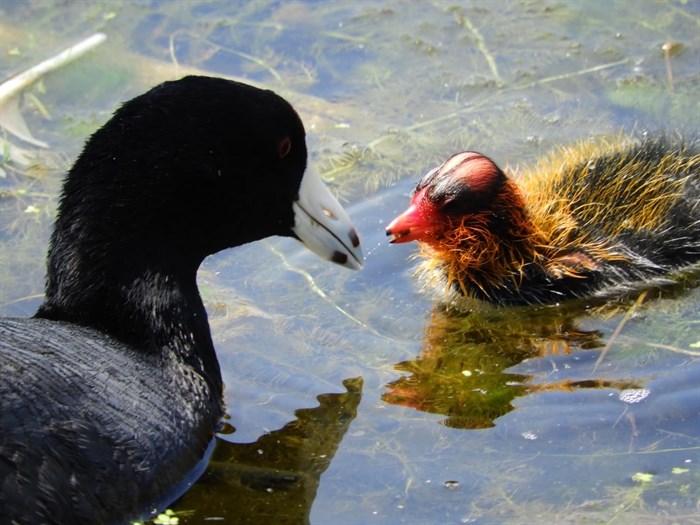Science
Growing risk of once-in-a-century solar superstorm that could knock out internet, study says – CTV News

TORONTO —
Imagine if one day the internet was down not just in your neighbourhood, but across the globe, knocked out by a threat from space: an enormous solar superstorm.
It sounds like science fiction, but a new study says it could become our reality earlier than we think if we don’t prepare properly for the next time the sun spits a wave of magnetized plasma at us.
“Astrophysicists estimate the likelihood of a solar storm of sufficient strength to cause catastrophic disruption occurring within the next decade to be 1.6 — 12 per cent,” the study states.
“Paying attention to this threat and planning defenses against it, […] is critical for the long-term resilience of the internet.”
The paper, written by University of California assistant professor Sangeetha Abdu Jyothi, is titled “Solar Superstorms: Planning for an Internet Apocalypse.”
It paints a scary picture of what could happen if an enormous solar storm hits us: submarine cables between countries shut down, power grids offline, data centres from web giants at risk of going dark.
But how do we even start protecting against it?
Solar activity isn’t easy to predict. While we know that the sun has an 11-year cycle that lets us track when solar activity will be higher, whether these high points will have harmless solar flares or large-scale solar weather events isn’t easy to pinpoint.
The sun also has a longer cycle that takes approximately 80-100 years called the Gleissberg cycle, in which large-scale solar events during solar maxima (the high point of the 11-year-cycle) become four times more likely to occur.
The two most recent solar cycles, from 1996-2008 and 2008-2020, were part of a minimum activity period during the Gleissberg cycle.
“In other words, modern technological advancement coincided with a period of weak solar activity and the sun is expected to become more active in the near future,” the study stated.
This means that the modern internet infrastructure we’ve developed over the last few decades has never been tested by strong solar activity.
WHAT IS A SOLAR SUPERSTORM?
Also known as a geomagnetic storm, a solar superstorm is what happens when something called a coronal mass ejection (CME) escapes the sun and strikes the Earth.
Large portions of the sun’s outer layer, the corona, can be blown off into space due to changes in the sun’s magnetic fields. These clouds of magnetized particles and superheated gas can reach the Earth in anywhere from a day to four or five days.
If Earth is in the path of a CME, the solar plasma will slam into the Earth’s magnetic field and cause a geomagnetic storm. While this doesn’t directly harm any humans on the planet below, it can impact our magnetic field and cause “strong electric currents on the Earth’s surface that can disrupt and even destroy various human technologies.”
We know this because it’s happened before — just never in the age of the internet.
The first recorded CME to greatly impact Earth was in 1859. Known as the Carrington event, it caused large-scale telegraph outages in North America and Europe, with equipment fires and electric shocks to telegram operators reported across the globe.
The CME that caused it was travelling so fast it reached the Earth in only 17.6 hours, and scientists have theorized in the past that if such an event struck us today, it could knock out power for 20-40 million people in the U.S. alone for up to two years.
The strongest CME of the past century was in 1921. But smaller CMEs have impacted us since, including one that knocked out the power grid in Quebec in 1989, plunging the entire province into darkness.
Just when the next big CME could be isn’t certain. The study stated that this next solar cycle is on track to have between 210 and 260 sunspots at the height of the sun’s cycle, which is twice the amount that occurred at the peak in the last cycle. CMEs originate near sunspots, so this can be a predictor for the strength and likelihood of a CME.
The new study pointed out that in the last Gleissberg cycle, its minimum was in 1910, and a huge CME occurred just over a decade later. Since we’re coming out of a period of minimum solar activity, we should be on the alert.
“Given that a strong solar cycle that can produce a Carrington-scale event can occur in the next couple of decades, we need to prepare our infrastructure now for a potential catastrophic event,” the study stated.
WHAT IS AT RISK?
The study looked at the physical infrastructure that could be at risk, from cable networks to data centers, to the location of more than 46,000,000 internet routers.
A big threat during solar superstorms is geomagnetically induced currents (GIC) that flow through ground-based power grids and systems, putting these at risk as well as oil and gas pipelines and networking cables.
The real worry is how these would affect long-distance cables.
While long-distance cables that carry signals in optical fibres are not at a risk from GICs because there is no actual electric current in them, conductors that accompany them to power repeaters, called power feeding lines, are at risk.
Submarine cables, which are laid in the sea to carry telecommunication signals, have never been stress-tested by a strong solar event. These undersea cables keep our global internet going, carrying almost all of our communications.
“During catastrophic events with a large probability of repeater failure, at an inter-repeater distance of 150 km, nearly 80 per cent of undersea cables will be affected, leaving an equal fraction of endpoints unreachable, whereas 52 per cent of cables and 17 per cent of nodes in the U.S. land network are affected,” the study predicted.
Satellites are also at risk during solar superstorms, not because of electric currents caused by the magnetic fields interfacing, but because of coming into contact with the supercharged particles themselves.
“Both surface-based and satellite-based communication systems are under high risk of collapse if a Carrington-scale event occurs again,” the study pointed out.
The study looked at the weak points of physical infrastructure across the globe in order to estimate what could happen in best and worst case scenarios in different countries.
Assuming there’s only low failure of long-distance cables, in the U.S., most cables connected to Oregon would fail, and connectivity to Canada and Europe would fail completely.
In China, while more than half of their connections would be unaffected, Shanghai would lose all of its long-distance connectivity.
Assuming high levels of failure, all long-distance connectivity would be lost on the West coast of the U.S., except for one cable connecting Southern California to Hawaii. The U.K. would lose most of its long-distance cables, and its connection to North America. New Zealand would lose all of its connections except to Australia.
“The U.S. is one of the most vulnerable locations with a high risk of disconnection from Europe during extreme solar events,” the study said. “Intracontinental connections in Europe are at a lower risk due to the presence of a large number of shorter land and submarine cables interconnecting the continent.”
The study also looked at which regions would be vulnerable in a geomagnetic storm, and then how many internet providers were located in those region, and found that 57 per cent of internet providers would be at risk.
When it came to data centres run by web giants such as Google and Facebook, the study found that Google data centres are more spread out and largely located in countries that have cables less likely to fail, whereas Facebook’s data centres are located mostly in the northern part of the northern hemisphere.
“Owing to the limited geographic spread of data centers, Facebook will have less resilience in the event of solar superstorms,” the study said.
HOW TO PLAN
But although this all sounds scary, we have time to start the process of bolstering our infrastructure.
The study recommended we strengthen our infrastructure by doing things like laying more cables to minimize the risk of being completely cut off.
“Since links from the U.S. and Canada to Europe and Asia are highly vulnerable, adding more links to Central and South America can help in maintaining global connectivity,” the study suggested.
Planning for future data centres to be more spread out across the globe instead of clustered in northern parts of Europe and North America will also help keep the world connected in the event of a solar superstorm.
Spacecraft currently will only be able to give us 13 hours of warning if a huge CME were heading our way, the study stated. Hopefully we would’ve predicted it before then, but that’s the window in which we could be certain one was on the way.
The study suggested that in anticipation of this, we could devise a shutdown strategy to be enacted globally, that would allow us to minimize connectivity loss after the geomagnetic storm. Power grids would need to reduce or shut down completely during the storm.
In terms of internet infrastructure, we need to figure out how to protect equipment during the solar storm, and figure out how to keep service going if there is damage afterwards. Part of that is designing things that have been tested for how they would function in the event of large-scale failures, something that currently isn’t part of resilience evaluation.
“We need to rethink the network environment in the event of a partial or complete disconnection,” the study stated.
Designing a backup system that could patch together available modes of communication, using cables, satellite and wireless, could help keep things going.
It might require a lot of rethinking how we keep the world connected. But if we want the Internet Age to continue running smoothly, it might be necessary to start protecting it from the sun’s future wrath.
Science
Exploring ecological networks in a digital world | News | Vancouver Island University | Canada – Vancouver Island University News


Getting to know Samantha Letourneau
By day, Samantha Letourneau is Vancouver Island University’s Canada Learning Bond project lead and Volunteer Tutor Coordinator. She’s also a musician and dancer and for the past two years, she’s been collaborating with Swedish artist Mårten Spångberg, thanks to funding obtained through Crimson Coast Dance, to create a digital art installation that goes live on Friday, April 26. A launch event takes place at Black Rabbit restaurant in the Old City Quarter that night. Samantha is also hosting a creative process workshop on April 27 and 28.
Can you share a bit about your background as an artist and how you got into it?
I have been working in art for a very long time, as a musician and dancer as well as an art administrator and program coordinator. I started music at the age of 11 and dance came later in my life in my early 20s. I always wanted to do dance, but I grew up in a small community in Yellowknife and at that time the only dance classes available were highland dancing, which I was not very interested in.
In my early 20s while living in Vancouver, I took classes in contemporary dance and was fortunate to land a small part in the Karen Jameison Dance company for a piece called The River. The River was about rivers and connection between the reality of a real and physical outdoor river and the different reality of “the river within.” It was both a piece of art and outreach for the community. It included working with the S’pak’wus Slu’lum Dancers of the Squamish Nation. Somewhat ground-breaking for 1998.
From there I was hooked and wanted to do more in dance. I studied a lot and took many classes. Fast forward to now, I have been involved with productions and performances with Crimson Coast Dance for more than 15 years and greatly appreciate the talent and innovation that Artistic Director Holly Bright has brought to this community. She is amazing and very supportive of artists in Nanaimo.
How did this international exchange come about?
The Nordic/Nanaimo exchange is one of the innovative projects Holly created. At the height of the pandemic, funded by BC Arts Council and Made In BC, Crimson Coast Dance embarked on a project that explored the ways in which Nanaimo artists could participate in online exchanges.
Two artists in Nanaimo – myself and Genevieve Johnson – were introduced to artists from Europe and supported through this international exchange. My collaborator, Mårten Spångberg, is a Swedish artist living and working in Berlin. An extension of that exchange is funded by Canada Council for the Arts – Digital Now.
What brought Mårten and myself together – and I quote Mårten here – is “questions around climate change, ecology and the influence contemporary society has on its environments. We are not interested in making art about the ecological crises or informing our audience about the urgency that climate change implies, but instead through our research develop work that in itself proposes, practices and engages in alternative ecologies.”
We share an understanding that art is a unique place, in the sense of practice, activation, performance and event, through which alternative ecologies can emerge and be probed and analyzed.
Tell us about the launch event.
We are launching the digital art installation that Mårten and I created on April 26 at The Attic at Black Rabbit Restaurant. The event is free to attend but people must sign up as seating is limited. I produced video art with soundscapes that I recorded mixing field recordings with voice and instrumentation. Marten explores text, imagery and AI.
My focus is on the evolving and ongoing process of how we communicate with each other and to nature within a digital context.
During our collaboration, Mårten and I talked about networks, though not just the expansive digital network of the internet but of nature. We shared thoughts on mycelium, a network of fungal threads or hyphae, that lately has received much attention on the importance of its function for the environment, including human beings.
Building off this concept, ideas of digital and ecological landscapes being connected emerged. From this we worked both collaboratively and individually to produce material for this digital project. Mårten will be there via Zoom as well and we will talk about this two-year process and the work we created together.
Science
Voyager 1 transmitting data again after Nasa remotely fixes 46-year-old probe – The Guardian


Earth’s most distant spacecraft, Voyager 1, has started communicating properly again with Nasa after engineers worked for months to remotely fix the 46-year-old probe.
Nasa’s Jet Propulsion Laboratory (JPL), which makes and operates the agency’s robotic spacecraft, said in December that the probe – more than 15bn miles (24bn kilometres) away – was sending gibberish code back to Earth.
In an update released on Monday, JPL announced the mission team had managed “after some inventive sleuthing” to receive usable data about the health and status of Voyager 1’s engineering systems. “The next step is to enable the spacecraft to begin returning science data again,” JPL said. Despite the fault, Voyager 1 had operated normally throughout, it added.
Launched in 1977, Voyager 1 was designed with the primary goal of conducting close-up studies of Jupiter and Saturn in a five-year mission. However, its journey continued and the spacecraft is now approaching a half-century in operation.
Voyager 1 crossed into interstellar space in August 2012, making it the first human-made object to venture out of the solar system. It is currently travelling at 37,800mph (60,821km/h).
The recent problem was related to one of the spacecraft’s three onboard computers, which are responsible for packaging the science and engineering data before it is sent to Earth. Unable to repair a broken chip, the JPL team decided to move the corrupted code elsewhere, a tricky job considering the old technology.
The computers on Voyager 1 and its sister probe, Voyager 2, have less than 70 kilobytes of memory in total – the equivalent of a low-resolution computer image. They use old-fashioned digital tape to record data.
The fix was transmitted from Earth on 18 April but it took two days to assess if it had been successful as a radio signal takes about 22 and a half hours to reach Voyager 1 and another 22 and a half hours for a response to come back to Earth. “When the mission flight team heard back from the spacecraft on 20 April, they saw that the modification worked,” JPL said.
Alongside its announcement, JPL posted a photo of members of the Voyager flight team cheering and clapping in a conference room after receiving usable data again, with laptops, notebooks and doughnuts on the table in front of them.
The Retired Canadian astronaut Chris Hadfield, who flew two space shuttle missions and acted as commander of the International Space Station, compared the JPL mission to long-distance maintenance on a vintage car.
“Imagine a computer chip fails in your 1977 vehicle. Now imagine it’s in interstellar space, 15bn miles away,” Hadfield wrote on X. “Nasa’s Voyager probe just got fixed by this team of brilliant software mechanics.
Voyager 1 and 2 have made numerous scientific discoveries, including taking detailed recordings of Saturn and revealing that Jupiter also has rings, as well as active volcanism on one of its moons, Io. The probes later discovered 23 new moons around the outer planets.
As their trajectory takes them so far from the sun, the Voyager probes are unable to use solar panels, instead converting the heat produced from the natural radioactive decay of plutonium into electricity to power the spacecraft’s systems.
Nasa hopes to continue to collect data from the two Voyager spacecraft for several more years but engineers expect the probes will be too far out of range to communicate in about a decade, depending on how much power they can generate. Voyager 2 is slightly behind its twin and is moving slightly slower.
In roughly 40,000 years, the probes will pass relatively close, in astronomical terms, to two stars. Voyager 1 will come within 1.7 light years of a star in the constellation Ursa Minor, while Voyager 2 will come within a similar distance of a star called Ross 248 in the constellation of Andromeda.
Science
iN PHOTOS: Nature lovers celebrate flora, fauna for Earth Day in Kamloops, Okanagan | iNFOnews | Thompson-Okanagan's News Source – iNFOnews
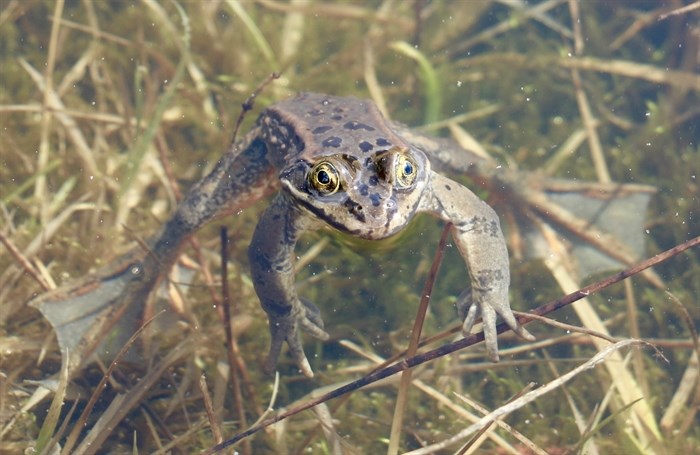

Photographers are sharing their favourite photos of flora and fauna captured in Kamloops and the Okanagan in celebration of Earth Day.
First started in the United States in the 70s, the special day on April 22 continues to be acknowledged around the globe. It’s a day to celebrate the planet and a reminder of the need for environmental conservation and sustainability, according to EarthDay.org.
These stunning nature photos show life in ponds and forests, in skies and on mountains, capturing the beauty and wonder of our local natural environments.
Area photographers shared some of their favourite finds and artistic captures. From frogs to flowers, the great outdoors is teeming with life.
If you have nature photos you want to share, send them to news@infonews.ca.
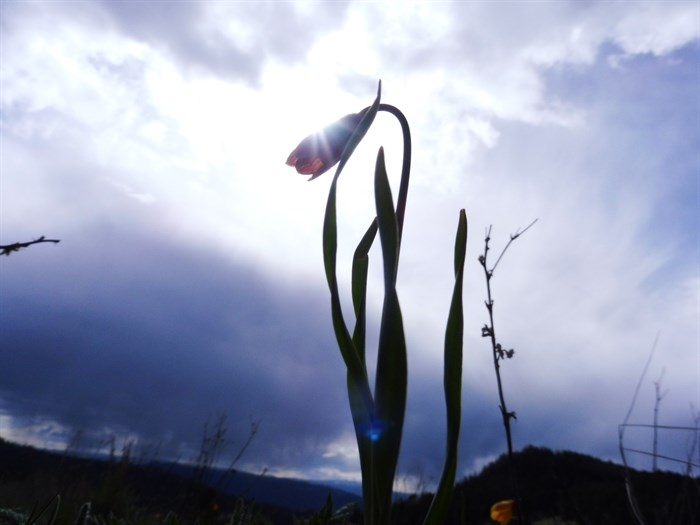



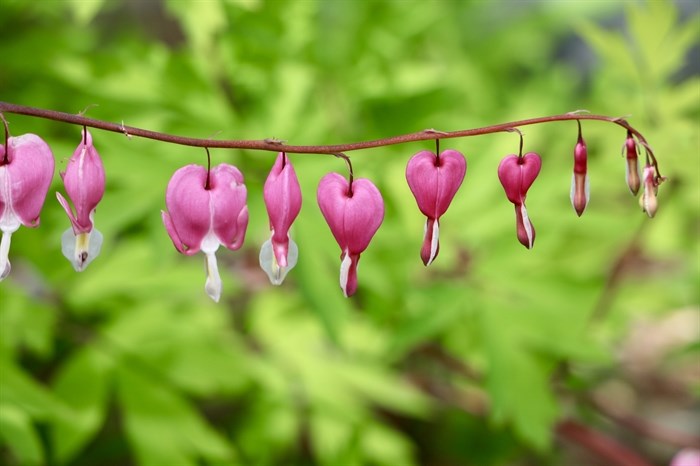

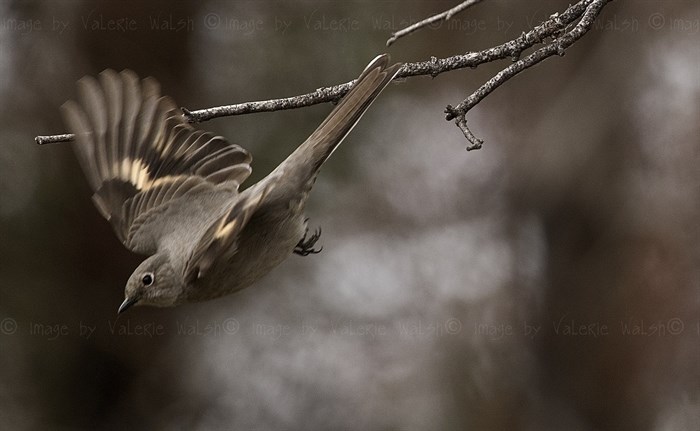

To contact a reporter for this story, email Shannon Ainslie or call 250-819-6089 or email the editor. You can also submit photos, videos or news tips to the newsroom and be entered to win a monthly prize draw.
We welcome your comments and opinions on our stories but play nice. We won’t censor or delete comments unless they contain off-topic statements or links, unnecessary vulgarity, false facts, spam or obviously fake profiles. If you have any concerns about what you see in comments, email the editor in the link above. SUBSCRIBE to our awesome newsletter here.


-



 Health24 hours ago
Health24 hours agoIt's possible to rely on plant proteins without sacrificing training gains, new studies say – The Globe and Mail
-



 Tech24 hours ago
Tech24 hours agoMeta Expands VR Operating System to Third-Party Hardware Makers – MacRumors
-



 Science23 hours ago
Science23 hours agoNASA's Voyager 1 resumes sending engineering updates to Earth – Phys.org
-
Art5 hours ago
Mayor's youth advisory council seeks submissions for art gala – SooToday
-
Art17 hours ago
Made Right Here: Woodworking art – CTV News Kitchener
-
News23 hours ago
CTV National News: Honda's big move in Canada – CTV News
-



 Sports15 hours ago
Sports15 hours agoAuston Matthews turns it up with three-point night as Maple Leafs slay Bruins in Game 2 – Toronto Sun
-
Art17 hours ago
Meet artist J-Positive and the family behind his art store – CBC.ca





